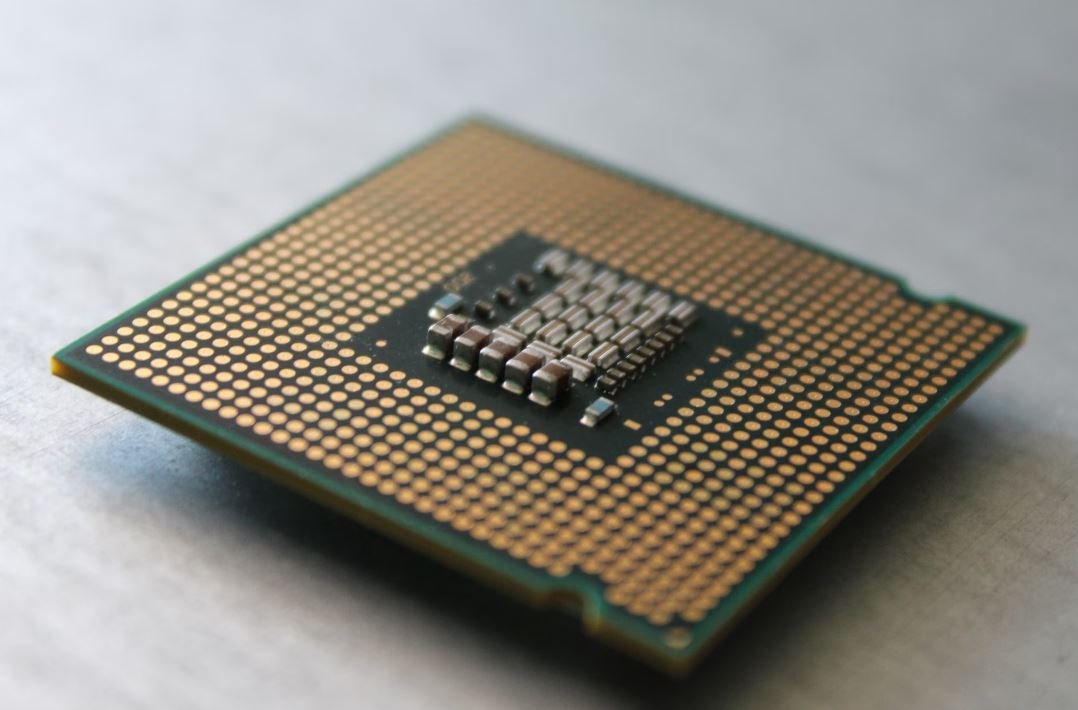Model Building Glue
Model building glue is an essential tool for hobbyists and enthusiasts who enjoy creating plastic models. Whether you’re building model airplanes, cars, ships, or any other type of model, having the right glue is essential for ensuring a strong, secure bond that will hold your creation together. This article explores the various types of model building glue available, their characteristics, and tips for choosing the right one for your project.
Key Takeaways:
- Model building glue is essential for creating strong bonds in plastic models.
- There are different types of model building glue, each with its own characteristics.
- Consider the material, drying time, and application method when choosing glue for your project.
- Proper ventilation and safety precautions are important when working with model building glue.
Types of Model Building Glue
There are several types of model building glues available on the market, each suitable for different materials and applications. The most commonly used glues include:
- Cyanoacrylate (CA) Glue: Also known as super glue or instant glue, CA glue is known for its quick drying time and strong bond. It is ideal for bonding small, delicate parts together. *CA glue can bond various materials, including plastics, metal, and wood.*
- Poly Cement: Poly cement is a solvent-based glue specifically formulated for plastic models. It creates a strong bond by chemically melting the plastic surfaces, resulting in a welded joint. *Poly cement can be applied using a brush, making it easy to control and apply.*
- Epoxy Resin: Epoxy glue consists of two components that need to be mixed together before use. It provides a strong bond and is suitable for larger models or when a longer working time is required. *Epoxy resin can bond different materials and offers excellent gap-filling properties.*
Choosing the Right Glue
When selecting model building glue, consider the following factors:
- Material: Determine the type of material you are working with as different glues bond better with certain materials.
- Drying Time: Consider the required drying time for your project. Some glues dry quickly, while others may require more time to set.
- Application Method: Evaluate the ease of use and control offered by the glue’s application method, such as brush, dropper, or tube.
Table: Comparison of Model Building Glues
| Glue Type | Material Compatibility | Drying Time | Application Method |
|---|---|---|---|
| Cyanoacrylate (CA) Glue | Plastic, metal, wood | Quick drying | Tubed or dropper |
| Poly Cement | Plastic | Medium drying time | Brush |
| Epoxy Resin | Various materials | Longer drying time | Mixed together |
Having a variety of glues suited for different materials can provide more flexibility and options for your model-building projects.
Tips for Working with Model Building Glue
- Ensure proper ventilation when working with glues to prevent inhalation of fumes.
- Follow the manufacturer’s instructions for application, as different glues may have specific requirements.
- Use appropriate safety precautions, such as wearing gloves, to protect your skin from contact with glue.
- Dispose of glue and its containers properly according to local regulations.
Table: Common Model Building Glue Safety Precautions
| Precaution | Description |
|---|---|
| Ventilation | Work in a well-ventilated area to avoid inhalation of fumes. |
| Protective Gear | Wear gloves and consider safety glasses to protect your skin and eyes from contact with glue. |
| Storage | Keep glues tightly sealed and store in a cool, dry place. |
Summary
Model building glue is an essential tool for hobbyists and enthusiasts who create plastic models. *Having a strong, secure bond is crucial for building models.* By understanding the various types of model building glue available, considering the materials and application methods, and taking proper safety precautions, you can choose the right glue to bring your model-building projects to life.

Common Misconceptions
1. Model Building Glue is Harmless and Non-Toxic
One common misconception about model building glue is that it is harmless and non-toxic. While some types of glue may be labeled as non-toxic, it is important to note that they can still be hazardous if misused or ingested. Even non-toxic glues can cause irritation if they come into contact with the eyes or skin. It’s always best to exercise caution and read the safety guidelines provided by the manufacturer.
- Non-toxic glue can still cause skin irritation
- Read and follow the manufacturer’s safety guidelines
- Avoid contact with eyes
2. All Model Building Glues are the Same
Another misconception is that all model building glues are the same. In reality, there are various types of glues available for model building, each suitable for different materials or techniques. For example, plastic model glue is formulated specifically for bonding plastic parts together, while super glue is great for quick and strong bonds. It’s important to choose the appropriate glue for your specific needs to ensure a successful and durable bond.
- There are different glues for different materials
- Plastic model glue is specifically designed for plastic models
- Super glue provides quick and strong bonds
3. Glue Drying Time Doesn’t Matter
Many people mistakenly believe that the drying time of model building glue doesn’t matter. However, the drying time can impact the quality of the bond and the overall success of the project. Some glues have quick-drying formulas that allow for fast assembly, while others take longer to cure, providing more time for adjustments and repositioning. It’s important to consider the drying time requirements of the glue you are using to ensure optimal results.
- Drying time affects the bond’s quality
- Quick-drying glues allow for fast assembly
- Longer drying time provides more flexibility for adjustments
4. Glue Can Fix Any Mistake
Many model builders believe that glue can fix any mistake made during the construction process. While glue can be used to repair minor mishaps, it is not a magical solution. Excessive or improper use of glue can weaken the structure, leave visible marks, or even damage the model. It’s essential to practice accuracy and patience during assembly to avoid relying too heavily on glue for corrections.
- Glue is not a universal fix-all solution
- Excessive glue can weaken the structure
- Avoid relying solely on glue for corrections
5. Glue Always Provides a Permanent Bond
Lastly, some individuals mistakenly assume that once a bond is made with model building glue, it is permanent and cannot be undone. While some glues create strong permanent bonds, there are also glue types available, such as solvent-based glues, that allow for disassembly or repositioning of the parts without causing damage. It’s important to consider the desired bond strength and future needs of the project when choosing the appropriate glue.
- Not all glues create permanent bonds
- Solvent-based glues allow for disassembly or repositioning
- Choose a glue based on the desired bond strength and future needs

Model Building Glue
Model building glue is an essential tool for hobbyists and enthusiasts who enjoy creating intricate scale models. Whether it’s assembling a miniature car or constructing a detailed aircraft, the right glue can make all the difference. In this article, we explore ten fascinating aspects related to model building glue, including its types, drying time, and adhesive strength.
Types of Model Building Glue
Take a look at the different types of glues commonly used in model building and their primary characteristics:
| Type | Description |
|---|---|
| Epoxy | An incredibly strong adhesive that dries clear and is ideal for bonding metal parts together. |
| Super Glue | A fast-drying adhesive that is perfect for small-scale model assembly and bonding plastic components. |
| Poly Cement | A versatile glue suitable for polystyrene models, providing a strong and flexible bond. |
| Wood Glue | Designed specifically for wooden model construction, this glue offers excellent bonding strength and is easy to sand. |
| White Glue | A water-based glue ideal for joining paper, cardboard, and other lightweight materials. |
Drying Time Comparison
Explore the varying drying times of different model building glues:
| Glue Type | Average Drying Time |
|---|---|
| Epoxy | 24 hours |
| Super Glue | 10 seconds |
| Poly Cement | 3 minutes |
| Wood Glue | 1 hour |
| White Glue | 30 minutes |
Adhesive Strength Comparison
Discover the adhesive strength ratings of various model building glues:
| Glue Type | Adhesive Strength (psi) |
|---|---|
| Epoxy | 2,500 |
| Super Glue | 3,500 |
| Poly Cement | 800 |
| Wood Glue | 4,000 |
| White Glue | 500 |
Use for Diagonal Bonding
Model builders often require diagonal bonding for added stability and strength. The following glues are ideal options:
| Diagonal Bonding Glue | Recommended Glue Type |
|---|---|
| Plastic to Plastic | Super Glue |
| Metal to Metal | Epoxy |
| Wood to Wood | Wood Glue |
Heat Resistance of Glues
When working with scale models subjected to elevated temperatures, it’s essential to choose a glue with adequate heat resistance. Consider the following options:
| Glue Type | Heat Resistance (in °C) |
|---|---|
| Epoxy | 120 |
| Super Glue | 82 |
| Poly Cement | 93 |
| Wood Glue | 76 |
| White Glue | 54 |
Solvent-Free Alternatives
If you prefer to work with glue that has fewer harmful chemicals, these solvent-free options are worth considering:
| Solvent-Free Glue | Description |
|---|---|
| Cyanoacrylate Glue | A non-toxic, odorless adhesive that bonds rapidly and securely without the need for solvents. |
| Water-Based Glue | These glues are eco-friendly, non-flammable, and easy to clean up with water. |
Resistance to Moisture
For scale models exposed to humid or wet environments, it’s vital to use glues with high moisture resistance. The following options are well suited for such situations:
| Glue Type | Moisture Resistance |
|---|---|
| Epoxy | High |
| Super Glue | Low |
| Poly Cement | Medium |
| Wood Glue | Medium |
| White Glue | High |
Non-Toxic Options
If you prioritize safety or if your model building activities involve younger individuals, these non-toxic glues are excellent choices:
| Non-Toxic Glue | Description |
|---|---|
| PVA Glue | A non-toxic adhesive that ensures safer usage for both children and adults. |
| Acrylic Glue | Non-toxic and easy to work with, this glue provides versatility and convenience. |
Cost Comparison
Get an idea of the relative costs of different glues utilized in the model building industry:
| Glue Type | Approximate Cost (per ounce) |
|---|---|
| Epoxy | $2.50 |
| Super Glue | $1.00 |
| Poly Cement | $0.75 |
| Wood Glue | $0.50 |
| White Glue | $0.25 |
Model building glue plays a crucial role in bringing miniature worlds to life. The wide array of glues available ensures that model builders can choose the perfect adhesive to suit their specific needs. Whether it’s determining the ideal drying time, adhesive strength, or considering factors like heat resistance and toxicity, the right glue enhances both the efficiency and enjoyment of the modeling process. By carefully selecting the appropriate glue, model builders can create durable, visually stunning masterpieces that will leave a lasting impression.
Frequently Asked Questions
What is model building glue?
Model building glue, also known as plastic cement or model cement, is a specially formulated adhesive designed for joining plastic model kits together. It is commonly used by hobbyists and model enthusiasts to assemble plastic scale models, such as airplanes, cars, ships, and figures.
How does model building glue work?
Model building glue works by chemically softening the plastic surfaces to be joined. The adhesive contains a solvent, such as acetone or toluene, that melts the plastic parts and fuses them together. Once the glue is applied, the solvent evaporates, leaving behind a strong, seamless bond.
Is model building glue safe to use?
When used properly, model building glue is generally safe to use. However, it is important to follow the manufacturer’s instructions and take necessary precautions, such as working in a well-ventilated area and avoiding direct contact with the adhesive. Some model building glues may contain toxic substances, so it is advised to handle them with care and keep them out of reach of children.
Can model building glue be used on other materials besides plastic?
Model building glue is specifically formulated for plastic materials. While it may work to some extent on other materials, such as resin or vinyl, it is not recommended for use on materials like metal, wood, or fabric. Different adhesives are available for bonding various materials, so it’s best to choose the appropriate adhesive based on the materials you are working with.
How long does it take for model building glue to dry?
The drying time of model building glue depends on various factors, including the type of glue, the thickness of the adhesive layer, and the environmental conditions. In general, the glue can set within minutes and fully cure within a few hours. However, it is advisable to allow the glued parts to dry and set undisturbed for at least 24 hours to ensure a strong bond.
Can model building glue be used for filling gaps or repairing broken parts?
Model building glue is primarily designed for joining parts together rather than filling gaps or repairing broken parts. Its thin consistency makes it less suitable for gap-filling applications. However, there are other types of adhesives, such as putty or epoxy, that are better suited for filling gaps or repairing broken parts in scale models.
Does model building glue leave any visible residue?
When used correctly, model building glue should not leave any visible residue. The solvent within the glue melts the plastic surfaces, creating a bond that is nearly seamless. However, if excessive glue is used or if it is not applied evenly, some residue or excess adhesive may be visible. It is important to use the glue sparingly and remove any excess before it dries.
Can model building glue be removed once it has dried?
Once model building glue has dried, it forms a strong bond that is difficult to remove without damaging the plastic surface. It is generally not recommended to try and remove the glue after it has fully cured. However, if necessary, some solvents or chemicals specifically designed for removing adhesive may be used, but caution should be exercised to avoid damaging the model’s surface.
Are there any alternatives to model building glue?
Yes, there are alternative methods and adhesives available for model assembly. Some model builders prefer using plastic cement with brush applicators, while others opt for cyanoacrylate (super glue) for quick, strong bonds. There are also specialized adhesives, like epoxy or white glue, that can be suitable for certain types of models or specific applications. The choice of adhesive may depend on individual preferences, the materials being used, and the specific requirements of the model.
Is it necessary to use clamps or weights to hold the parts together while the glue dries?
It is recommended to use clamps or weights to hold the parts together while the glue dries, especially for larger or more complex models. This helps to ensure that the parts are securely bonded and prevents any shifting or misalignment during the drying process. However, for smaller or simpler models, the initial bond strength of the glue may be sufficient and clamps may not be necessary.




